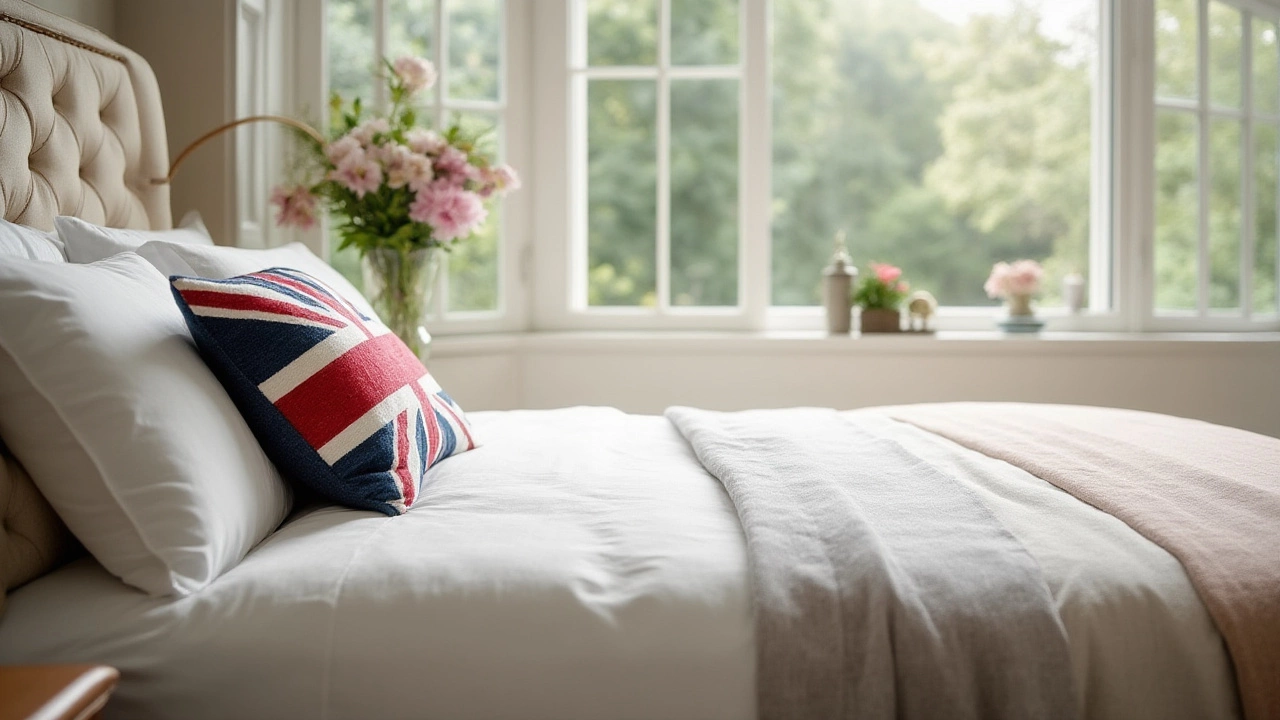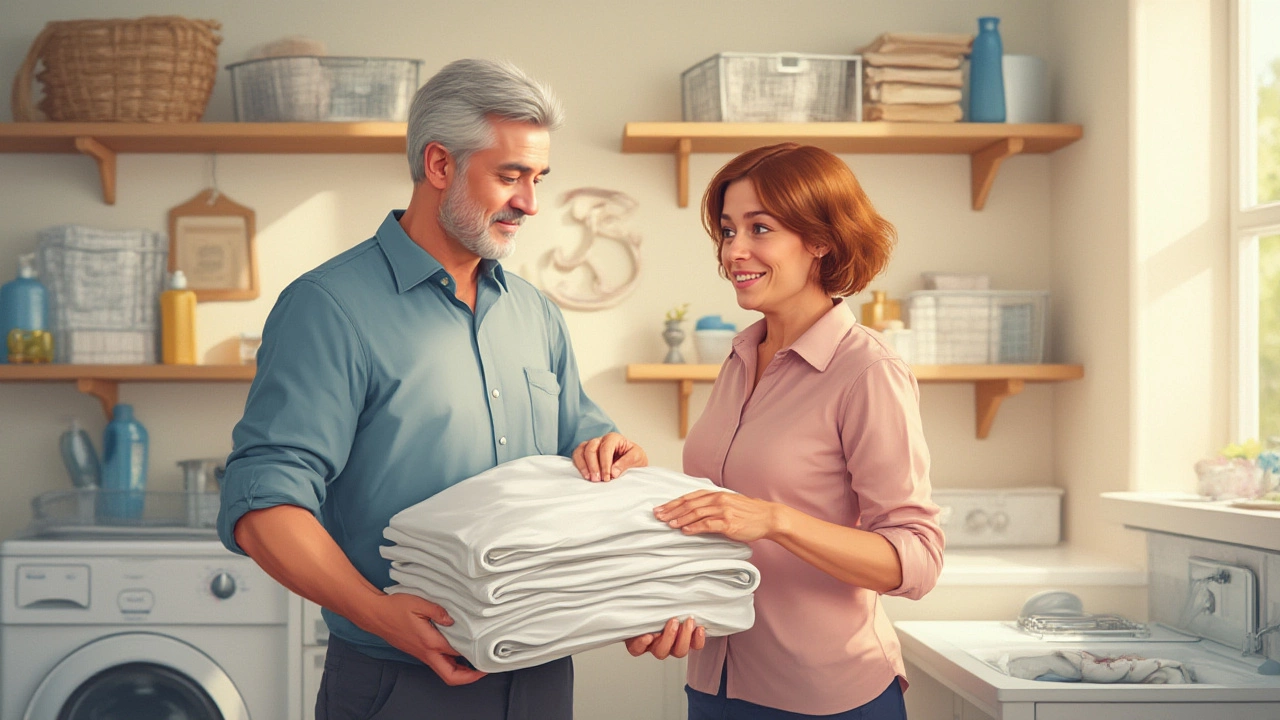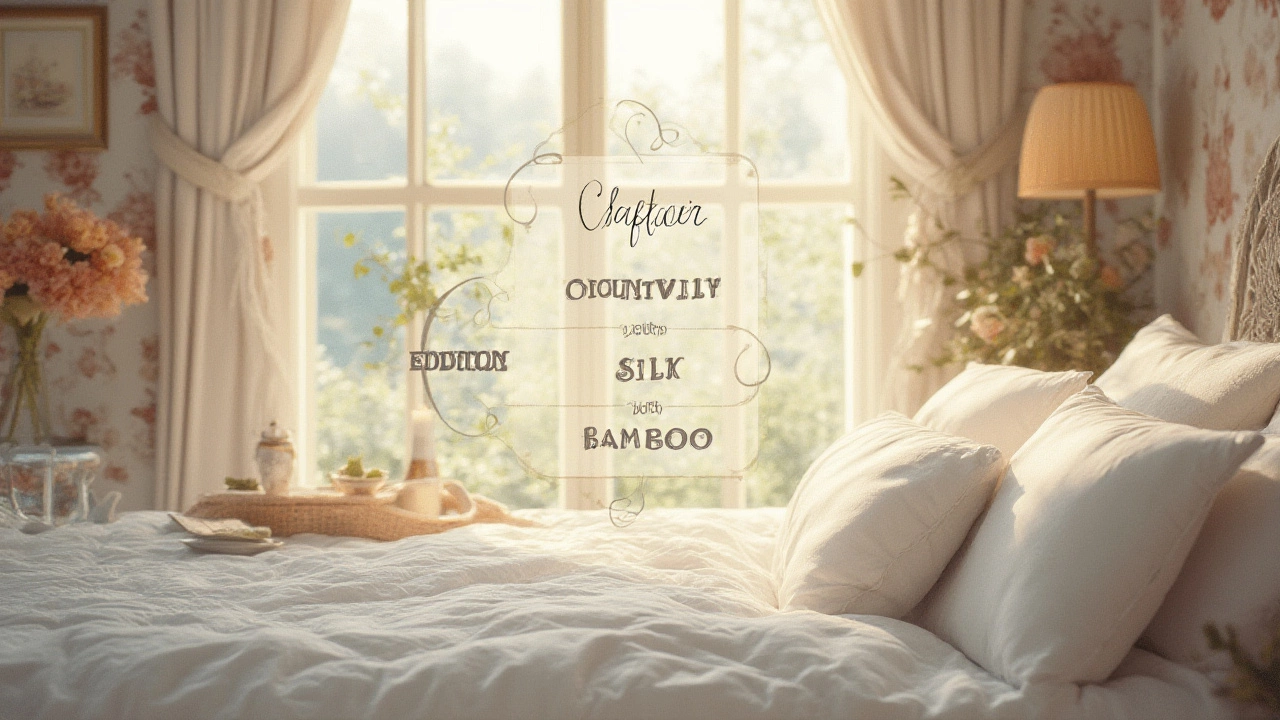Best Bedding Materials for Durability: Which Lasts the Longest?
 Jul, 5 2025
Jul, 5 2025
Most people don’t think about their bedding until it rips or pills, leaving them with a lumpy, scratchy mess and a craving for something softer. But not all bedding wears out at the same speed—even if you wash it right. So, what type of bedding actually sticks around the longest? Ready for a surprise? The answer isn’t the fanciest thread count or a trendy eco label. Longevity in bedding relies on fiber, weave, and how you care for it. Let’s settle the debate and save you cash in the long run.
What Makes Bedding Durable?
Picture your bed as a battlefield, enduring nightly tossing, turning, sweaty summers, and freezing winters. Sheets face a lot—constant pressure, skin oils, repeated washes, pets, breakfast in bed mishaps, you name it. And not every fabric handles the chaos equally.
Durable bedding starts with the type of fiber. Natural fibers like cotton, linen, and bamboo have earned their reputation for toughness, but each has its quirks. Polyester, a synthetic player, is also known for lasting ages, but sacrifices feel and breathability. And then there’s how the sheets are woven. Percale, sateen, twill, and jersey all use different patterns to bind the threads, creating a texture that might be crisp, silky, stretchy, or warm. But the tighter the weave, the better it stands up to abuse.
The secrets don’t stop there. Thread count gets hyped way too much. Manufacturers love to slap a huge number on the label, but once you blow past 400, it’s just marketing noise—or worse, double-counting twisted yarns to inflate the number. What really counts is the length of the fiber (longer is better), the purity (100% single-ply, not mixed with fillers), and good, thick construction.
Certain treatments can also boost longevity. Pre-washed and enzyme-treated fibers shed less, resist shrinkage, and shrug off wrinkles. But heavy chemical coatings to make sheets wrinkle-free can backfire—making them stiff or causing early wear.
Here’s where it all comes together: the best bedding for longevity is made with long-staple cotton (like Egyptian or Pima cotton), tightly woven in percale or sateen, or pure linen with a solid medium-to-heavy weave. Lower-quality blends wear thin, ball up, and lose their softness sooner than you’d guess.
Best Materials for Long-Lasting Bedding
Let’s get hands-on with the top bedding materials when it comes to outlasting the competition. You might be surprised that the softest doesn’t always equal the sturdiest.
Long-staple cotton rules the game. Look for Egyptian, Pima, or Supima cotton. These varieties grow longer fibers, which get spun into stronger, more elastic threads. Long-staple cotton resists fraying, tearing, or pilling for years, even after hundreds of washes. If you hate waking up in a ball of fuzz, ditch low-grade blends and grab a legit long-staple set from a brand you trust.
Linen, woven from the flax plant, is the heavyweight champion of durability. You’ll spot linen sheets outliving cotton by a decade or more. They start stiff, soften with age, and get comfier the more you wash them—without wearing out. Linen naturally repels dirt, absorbs moisture, and kills bacteria. It doesn’t mind a little tough love, surviving extra spins in the dryer or heavy-duty settings.
Polyester gets a bad reputation from the old scratchy hotel sheets, but today’s high-quality microfiber (a type of polyester woven in super-thin threads) actually stands up pretty well—think hundreds of washing cycles, coolness, and little risk of shrinkage. The catch? It traps heat and can feel plasticky, so lightweight sleepers or hot climates should stick with natural fibers.
Bamboo sheets are getting buzz for a reason. Bamboo-derived rayon is ridiculously soft and surprisingly resilient, resisting pilling and tearing better than most medium-grade cotton. It also fights microbes naturally, and some brands blend bamboo with cotton for the perfect tough-and-soft combo. Double-check labels, though—some “bamboo” sheets are really just viscose with harsh chemicals, so look for trustworthy certified brands if sustainability matters to you.
Keep an eye out for heavy-duty weaves like percale and twill. Percale (plain weave, like a basic grid) is extra crisp and less likely to pill or snag, while twill adds diagonal strength. Sateen weaves have a silkier shine but tend to wear thin faster if not made with high-quality fibers.

Weave and Thread Count: The Real Story
Here’s the part where half the marketing out there goes out the window. High thread count isn’t the magic bullet for longevity. Yeah, a higher count (200–400 for cotton; up to 500 for sateen) feels silkier, but above 400, most of those numbers are just marketing trickery.
Instead, focus on the kind of weave. Percale weave is a basic one-over, one-under basket pattern. It makes sheets crisp, matte, and tough as nails—think your favorite old shirt. Percale holds up so well it’s the go-to for hotels that wash sheets every day. Sateen, on the other hand, does a three-over, one-under pattern, making it softer and shinier. It feels great out of the box but tends to snag or wear thin over time unless the fiber is top-notch.
Linen weaves are chunkier at the start, but they’re built to soften rather than break down. Linen sheets just keep aging gracefully, often outlasting even good cotton for decades.
Twill weave—similar to what you find in denim—adds super strength, but it’s not as common in bedding outside of flannel or certain specialty cottons. If you want bedding that can take a beating, look for a twill option.
So, next time you see sheets advertising a thread count over 1000, take it with a grain of salt. Instead, check fiber type, weave style, and whether the product feels tough and tightly woven. You’ll get longer life for your money.
Care Tips to Make Bedding Last Longer
Even the toughest bedding will crumble if you treat it like a doormat. Think of the following care tips like armor for your sheets and duvet covers. Simple moves will add years to your bedding’s lifespan—saving you the hassle and cost of replacing them often.
- Wash in cool or lukewarm water. Hot water wears fibers thin and fades colors faster.
- Use a gentle, phosphate-free detergent. Harsh chemicals can break down fibers, especially on natural materials.
- Skip heavy-duty cycles unless you’re tackling big stains. Regular or delicate cycles get the job done for sheets.
- Don’t overload the washer. Sheets need space to move because packed loads lead to friction and pilling.
- Dry sheets on low heat or line dry. High temperatures shrink and fry fibers, especially cotton and bamboo.
- Avoid fabric softeners. They leave a residue, making sheets stiff and weakening the fabric.
- Rotate your bedding sets. Have at least two in the rotation so each one catches a break between washes.
- Keep any sharp jewelry, zippers, or pets’ claws away. These are prime culprits for snags.
- If you notice a loose thread, snip it—don’t yank. Pulling can unravel the weave.
Bonus tip: Wash sheets before first use. This softens fibers and removes any lingering factory chemicals that could weaken the weave with time. Store bedding away from direct sunlight, as UV rays can fade and weaken fabric—especially natural fibers like cotton and linen.

When Should You Replace Bedding?
Even the most durable bedding eventually throws in the towel, but you don’t have to live with scratchy, ugly linens just because they technically “work.” Here’s how to know when it’s time for a fresh set and how to stretch your dollar farther.
- If your sheets are thinning and translucent in the middle, it’s game over.
- Persistent pilling, even after gentle washing, can’t be fixed and means the fibers have broken down.
- Notice stains that simply won’t wash out? Time for an upgrade.
- Funky smells that linger after a hot wash? That’s bacteria trapped in damaged fibers.
- Seams or elastic corners fraying? Not worth the hassle of fixing, seriously.
Sheets made with long-staple cotton or linen can last five to ten years with decent care. Lower-tier blends or polyester start to show wear after just a couple of years. Higher-quality products cost more upfront, but they save you from replacing sheets every year or two—and they feel better the whole time.
If you want an honest hack: hotel brands sell highly durable sheets built to handle daily rough use and dozens of washes per week. You’ll usually find them in percale weaves with long-staple cotton, and they’re often priced aggressively because hotels buy them in bulk. Worth a look if you want the pro-level experience at home.
So, quit burning cash on flashy marketing claims or “miracle” fabrics. Invest in the best material you can, follow care instructions, and rotate your sets. You’ll save money and sleep way better on bedding that just won’t quit.